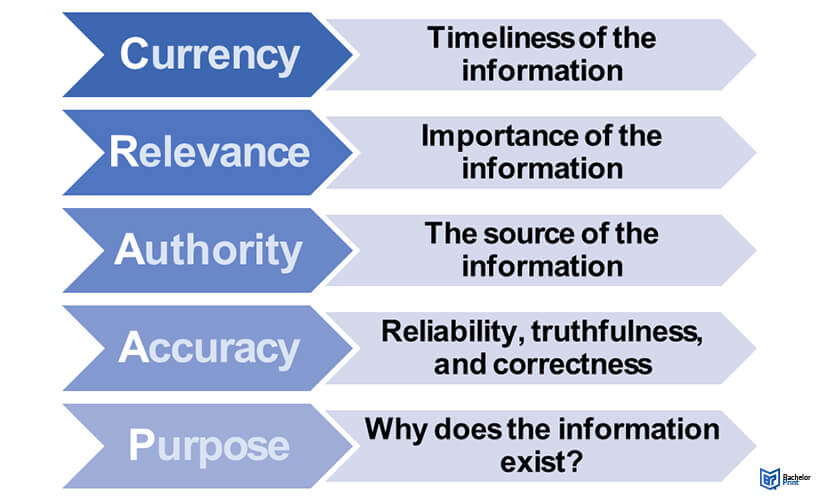
The act of utilizing and managing sources is a fundamental cornerstone of academic, journalistic, and professional research. As a researcher, working with sources gives one a stronger argument and prevents cases of unintentional plagiarism.
To effectively work with sources, it’s crucial to comprehend various techniques such as paraphrasing, summarizing, creating bibliographies, and integrating citations within the text.
Definition: Working with sources
Working with sources is important for the credibility of one’s research. A researcher must be able to discern whether sources may be trusted or not.
Some factors to consider when working with sources include authors, audience, content, timeliness, publishers, and purpose.
How to avoid point deductions
Point deductions can also be caused when citing passages that are not written in your own words. Don’t take a risk and run your paper through our online plagiarism checker. You will receive the results in only 10 minutes and submit your paper with confidence.
Working with sources: What is a scholarly source?
Scholarly sources are materials written by academics or experts in a particular field. The sources highlight new research findings, summaries, and theories.
Scholarly publications, such as articles, books, and websites, are available in different forms. These publications can either be based on secondary or primary research.
✓ When working with sources, scholarly sources should:
- Be based on verifiable facts
- Have a bibliography list.
- Be authoritative
- Have a list of qualified authors who work for institutions with a good reputation.
- Appeal to the logic of the reader.
-
Target a particular audience
- An expert writes for other experts; therefore, the language should demonstrate expertise in a particular topic.
✘ When working with sources, scholarly articles should not:
- Have simplistic language
- The author should use technical terms to demonstrate expertise in the particular field.1
- Present obvious bias
- Credible sources are based on facts, not opinions.
- Have grammatical errors
- Have an entertaining look
- Scholarly articles are used to inform and should have graphs, charts, and statistics rather than pictures.
- Address broad audience
- Scholarly articles are based on knowledge about a particular field.
Working with sources: Types of sources
There are three categories of sources; primary, secondary, and tertiary.
Primary sources
Primary sources are based on discoveries and original reports.
The author illustrates first-hand records of events and shares new information free of commentaries or interpretations.
When working with sources, scholarly articles and research-based journals are also considered primary sources. These articles are often peer-reviewed.
Academic journals come in different formats, such as literature reviews, research articles, case studies, meta-analyses, commentaries, book reviews, theoretical or conceptual professional communications, and letters to the editor.
Secondary sources
Secondary sources often try to analyze or explain primary sources.
These sources are a summary, new interpretation, reorganization, or information added to a primary source.
Tertiary sources
Tertiary sources simply repackage or summarize other sources’ ideas.
They include encyclopedias, dictionaries, Wikipedia, bibliographies, guidebooks, manuals, handbooks, and certain textbooks.
Working with sources: Finding scholarly sources
Researchers can find scholarly articles in specialized databases. One needs to pay a subscription fee to patrons in public, school, or company libraries to access such databases.
Usually, these databases are not subject-specific but provide articles on various topics. There are other free general scholarly databases, where the public can obtain sources.
Working with sources: Evaluating sources
An author working with sources should run a CRAAP test to assess the source’s validity. This test is an acronym for:
-
Currency
- A researcher working with sources needs to analyze the timeliness of the source. Consider factors like the date of publication, whether information has been updated, and the presence of functional links.
-
Relevance
- A researcher working with sources must assess how the information offered in a certain publication aligns with their needs and target audience.
-
Authority
- A credible article includes a source of information, such as the author’s credentials, institutional affiliations, and contact information.
-
Accuracy
- An article’s information should be backed by evidence.
-
Purpose
- A good author demonstrates the purpose of writing their work.

Working with sources: Citation
When writing academic papers, an author must cite their sources. If the author fails to show the reader where they got the information, they have committed plagiarism and academic misconduct.
Plagiarism is when an author uses the thoughts and ideas of someone else without giving credit to the owner or the source.
There are different academic writing guides used to cite ideas by authors working with sources:
- Modern Language Association (MLA) is commonly used in Arts and Humanities.
- APA style (American Psychological Association) is applied in Education, Psychology, and Sciences.
- Chicago style/Turabian style is used in Business, History, and Fine Arts.
Working with sources: Different methods of integrating sources
[table “2914” not found /]Tip for submitting your thesis
Depending on the type of binding and customer frequency at a print shop, the printing process and delivery may take a longer period of time. Don’t lose valuable time and use the printing service with free express delivery at BachelorPrint! This enables you to finalize your thesis up to one day before hand in.
Overview of all working with sources articles
FAQs
A credible scholarly source passes the CRAAP test. It is current, relevant, accurate, authoritative, and purposeful.
A reference list includes all the sources cited in the article. An author should include all articles, books, and other sources used in their work.
There are different guidelines on how to cite using various formats. When using APA citations, a researcher must include the last name of the author and the year the source was published. If it is a direct quote, they must include the exact page they got the idea or information.
